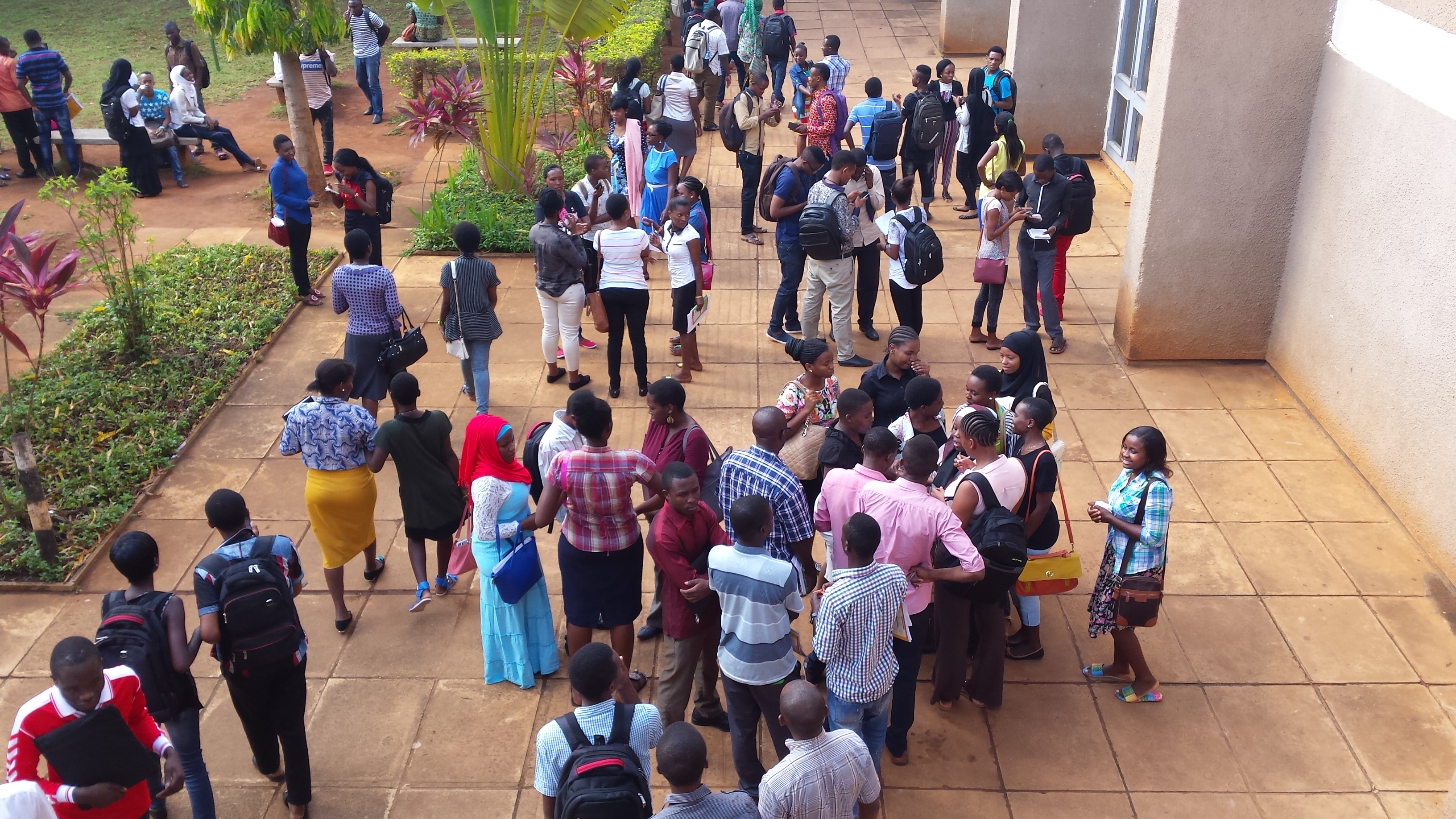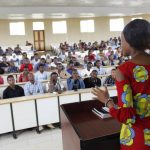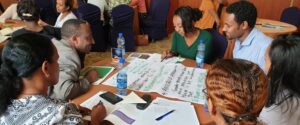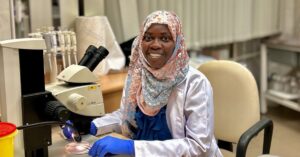
Untangling the impact of gender in the ‘hidden curriculum’
How university classes are taught can perpetuate unhelpful gender messages. Jennifer Chapin discusses the challenge and how a new framework for gender-responsive pedagogy can help.
Over the past few years at INASP, we have worked more and more in the space of gender and higher education. With close institutional partners in Africa and Asia, we have supported hundreds of academics and educators to mainstream gender into their institutions and teaching.
Throughout this work, we have learnt that the formal institutional aspects of gender mainstreaming are only one small component of transforming gender relationships within a higher education institution. Re-writing policies and introducing measures to encourage equality of staff and students are all important and certainly integral to making change last, but the actual silver bullet of addressing inequalities is about the transformation of social culture, and the ways that men and women work and interact with each other.
In a complex university setting, with tens of thousands of staff and students and a traditional hierarchical system of learning, this is a slow task that requires daily incremental, and often individual, changes that eventually become more than the sum of their parts. For many higher education institutions, the biggest challenge to addressing gender inequality lies outside of textbooks and classroom materials, and instead is manifested in a “hidden curriculum”.
The hidden curriculum concept emerged in the middle of the twentieth century, when it was often used to argue that educators (at all levels) bring their own personal and cultural biases, political views and concepts of social norms into the classroom. [1] Theorists like Benson Snyder and Paolo Friere in the 60s and 70s were concerned about the developmental and social impacts of students entering an education system that did not encourage them to critically assess not only what they were being taught, but also the background, views and biases of who was teaching them.
In 1991, Michael Haralambos stated: “the hidden curriculum consists of those things pupils learn through the experience of attending school rather than the stated educational objectives of such institutions.” [2] Using this definition, I think about it as a holistic concept that encompasses all of the unwritten or unintended lessons, values and perspectives that learners absorb while in education.
Gender and the hidden curriculum
More recently, there has been a shift towards understanding gender within this hidden curriculum lens. Louise Morley focused on how gender power relations are relayed through everyday interactions and transactions in a higher education setting. She talks about the role that both formal and informal practices play. Formal policies and practices may encourage (or not actively discourage) the male domination of higher learning spaces, and the feminisation of subjects (where women are encouraged into traditional ‘female’ industries like nursing, childcare and education). Informally, the unconscious biases that educators carry with them to the classroom often lead to downplaying women’s achievements, using gendered language or consistently calling on men to lead discussions or groups. [3]
A 2005 report focusing on Uganda, Tanzania, Sri Lanka, Nigeria and South Africa found that female students frequently identify teaching practices as a major impediment to their attendance and retention, especially in STEM courses, reporting that their achievements and abilities are routinely under-estimated by male teachers and fellow students. [4] Later, a 2011 study in Ghana and Tanzania found that female students’ achievements were broadly on par with those of male students, if not better. [5] However, their achievements were often considered ill-deserved or the result of sexual transactions for good grades. In this case, it was thought that female achievements were perceived to disrupt the status quo and were therefore undermined in order to maintain male dominance within the university structure. [6]
Morley advocates that pedagogy must explicitly acknowledge the hidden curriculum of gender relations in order for gaps and biases to be addressed within the curriculum and learning environment. At INASP, we have seen how gender gaps in a university setting perpetuates harmful gender norms that are then replicated in the workplace. This is why we have shifted focus in the last few years to better understanding the role of gender in teaching and learning through the development of a framework on gender responsive pedagogy.
To us, gender responsive pedagogy is about two main things: 1) That the learning needs of male and female learners are being addressed in teaching and learning processes (inside and outside of the classroom), and 2) that teaching staff are gender-aware and gender-responsive in their planning and facilitation of courses, and continuously reflecting and adapting.
Supporting gender-responsive pedagogy
Under the auspices of the Transforming Employability for Social Change in East Africa (TESCEA) project, INASP and partners from four East African Universities (Uganda Martyrs University and Gulu University in Uganda, and University of Dodoma and Mzumbe University in Tanzania) and two Kenyan organisations (the Association for Faculty Enrichment in Learning and Teaching and Ashoka East Africa) co-developed and piloted an approach to supporting gender responsive pedagogy within higher education institutions in low-resource or low-infrastructure environments.
Our new Gender Responsive Pedagogy framework and approach is intended to be the first step in supporting institutions to address the harmful aspects of the hidden curriculum.
The approach explicitly addresses key aspects of the hidden curriculum that can be overlooked in lesson planning. In addition to teaching and learning materials and assessment, we ask lecturers to consider how gender inequalities manifest in classroom management and interactions, in the language they use on a day-to-day basis, and in learning spaces around campus.
Drawing on INASP’s wider approach to capacity development, this approach is designed using participatory and learner-led principles, based on the understanding that applying skills and knowledge in the context of the workplace helps individuals to internalise change, and become agents of wider change within their organisations.
The approach supports institutions that wish to integrate this framework of gender responsive pedagogy into their teaching and learning practices, to ensure that the needs of both men and women are supported during – and subsequent to – their HE experience. We understand that supporting the learning needs of both men and women will improve the employability and social impact of an institution’s graduates as they bring the knowledge of gender responsiveness developed during their studies into their future careers.
References
[1] Jackson, Philip W. Life in Classrooms. New York: Holt, Rinehart and Winston, 1968
[2] Haralambos, Michael, and Martin Holborn. Sociology: Themes and Perspectives. London: Collins Educational, 1990
[3] Morley, Louise. Hidden Transcripts: The Micropolitics of Gender in Commonwealth Universities’. Women’s Studies International Forum 29, no. 6 (1 November 2006): 543–5
[4] Morley.
[5] Morley, ‘Sex, Grades and Power in Higher Education in Ghana and Tanzania’.
[6] Morley, Louise. ‘Sex, Grades and Power in Higher Education in Ghana and Tanzania’. Cambridge Journal of Education 41, no. 1 (March 2011): 101–15. http://dx.doi.org/10.1080/0305764X.2010.549453
Transforming Employability for Social Change in East Africa (TESCEA) is helping young people in Tanzania and Uganda to use their skills and ideas to tackle social and economic problems. With partners in Tanzania, Uganda and Kenya, TESCEA supports universities, industries, communities and government to work together to create an improved learning experience for students – both women and men. This improved learning experience fosters the development of critical thinking and problem-solving skills, and allows for practical learning beyond the classroom that improves a graduate’s employability.
The TESCEA partnership is led by INASP (UK), working with Mzumbe University (Tanzania), University of Dodoma (Tanzania), Gulu University (Uganda), Uganda Martyrs University (Uganda), Association for Faculty Enrichment in Learning and Teaching (Kenya) and Ashoka East Africa (Kenya).
TESCEA is funded by the UK’s Foreign, Commonwealth & Development Office (FCDO) as part of its SPHEIR (Strategic Partnerships for Higher Education Innovation and Reform) programme to support higher education transformation in focus countries in Sub-Saharan Africa, Asia and the Middle East.
To learn more about TESCEA, click here. To learn more about INASP’s Gender Responsive Pedagogy in Higher Education Framework, click here.

 Previous Post
Previous Post Next Post
Next Post


